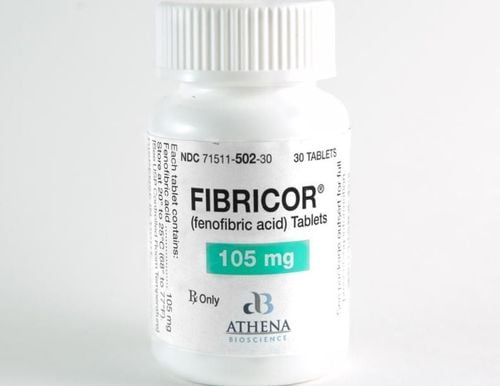This is an automatically translated article.
Myocardial necrosis due to myocardial infarction is a dangerous condition, seriously affecting the health and even life of the patient. The following is detailed information about the disease condition and new directions in the treatment of necrotic myocardium.
1. What is myocardial necrosis due to myocardial infarction?
Myocardial necrosis due to myocardial infarction is a condition in which the blood flow to the heart muscle is suddenly cut off, causing the heart muscle to be deprived of blood and oxygen, gradually damaged, and completely necrotic. Most myocardial necrosis is related to neonatal thrombosis that causes complete or near complete occlusion of the coronary artery lumen, respectively.This thrombus is rarely caused by a distant thromboembolism, but is mainly the result of local inflammation, causing cracks, cracks, breaks, breaks at the atherosclerotic plaque site, causing them to break and then end. platelets clumping around, creating a white thrombus. Then, other blood cells wrap in the fibrin to form a red thrombus, which moves along the blood stream, reaches the narrower coronary artery, and becomes blocked.
When having an acute myocardial infarction due to myocardial necrosis, the patient has some characteristic signs such as:
Typical angina: Pain like strangulation behind the sternum or in front of the heart, Pain radiates to the left shoulder and the inside of the left hand to the ring and little fingers. The pain usually comes on suddenly, lasts more than 20 minutes, does not improve even with the use of nitroglycerin. The pain can also spread to the neck, chin, shoulder, right hand, back, epigastrium, etc. However, there are also cases where people with myocardial infarction have less pain (after surgery, the elderly, high blood pressure, diabetes,...); Sweating, pale skin: When a heart attack occurs, the patient may sweat due to arrhythmia and severe chest pain. In addition, during the pain, it is possible to observe the patient's pale skin, cold extremities (due to insufficient blood supply); Shortness of breath: The throbbing pain in the heart causes the patient to have difficulty breathing, palpitations, palpitations, ... The more severe this condition, the higher the risk that the patient will have a drop in blood pressure or cardiovascular collapse; Nausea and vomiting: Is a sign that the digestive organs are also affected by myocardial necrosis, myocardial infarction.
2. Treatment of myocardial necrosis with stem cell technology
New cardiomyopathy from stem cells is a new technology applied in the treatment of myocardial necrosis, myocardial damage causing heart failure after myocardial infarction. This technology opens up a new opportunity for patients suffering from this condition.
New cardiomyopathy from stem cells for irreversible myocardial damage. The first patients in Vietnam to apply this treatment technique are those who have had a heart attack despite medical treatment and intervention but still cannot ensure the functioning of the myocardial infarction area. , the ejection fraction of the heart is low and there are signs of heart failure.
When performing the technique, the doctor will take about 200ml of bone marrow fluid, separate 10ml of the solution containing unselected stem cells. Then, using a catheter as an interventional cardiology procedure to inject the stem cell solution into the damaged, necrotic heart muscle. The balloon angioplasty is inflated to temporarily block the coronary artery - the cause of a heart attack. Then, stem cells are infused through the barrel of the aforementioned balloon to prolong the contact time between the stem cells and the microvascular network of the coronary arteries.
After 6 - 12 months of treatment with this technique, all 6 first treatment patients have no complications, clinical, laboratory results, tomography, echocardiography, magnetic resonance imaging, imaging the initial pulse, ... all show improved disease results (depending on the level).
Non-selected bone marrow stem cells are suitable and convenient to transplant into the myocardium because of their ease of application (technically) and their ability to develop in many different ways to form smooth muscle cells, muscle heart and immature blood vessels - 3 key cell types of the heart. Currently, in the world, stem cells have been applied in the treatment of many different cardiovascular diseases such as acute myocardial infarction, myocardial dilation, chronic coronary artery disease inability to dilate, dilated cardiomyopathy, surgery. bridging, irreversible peripheral artery disease, chronic heart failure,...
Sources of stem cells for treatment are very rich, can be obtained from rhabdomyoblasts, embryoblasts, muscle cells Stem cells from peripheral blood, stem cells from peripheral blood,... The method of putting stem cells into the heart is also through many different routes, can be transmitted through blood vessels, injected directly into the ventricular wall or performed direct injection. directly into the damaged lower extremity muscle,...
Myocardial necrosis due to myocardial infarction is a dangerous condition that can seriously affect the patient's health later on. In order to prevent the disease from getting worse, patients need to pay attention to maintain a healthy lifestyle, exercise with appropriate intensity,...
Follow Vinmec International General Hospital website for more information health, nutrition, beauty to protect the health of yourself and your loved ones in your family.
Please dial HOTLINE for more information or register for an appointment HERE. Download MyVinmec app to make appointments faster and to manage your bookings easily.













